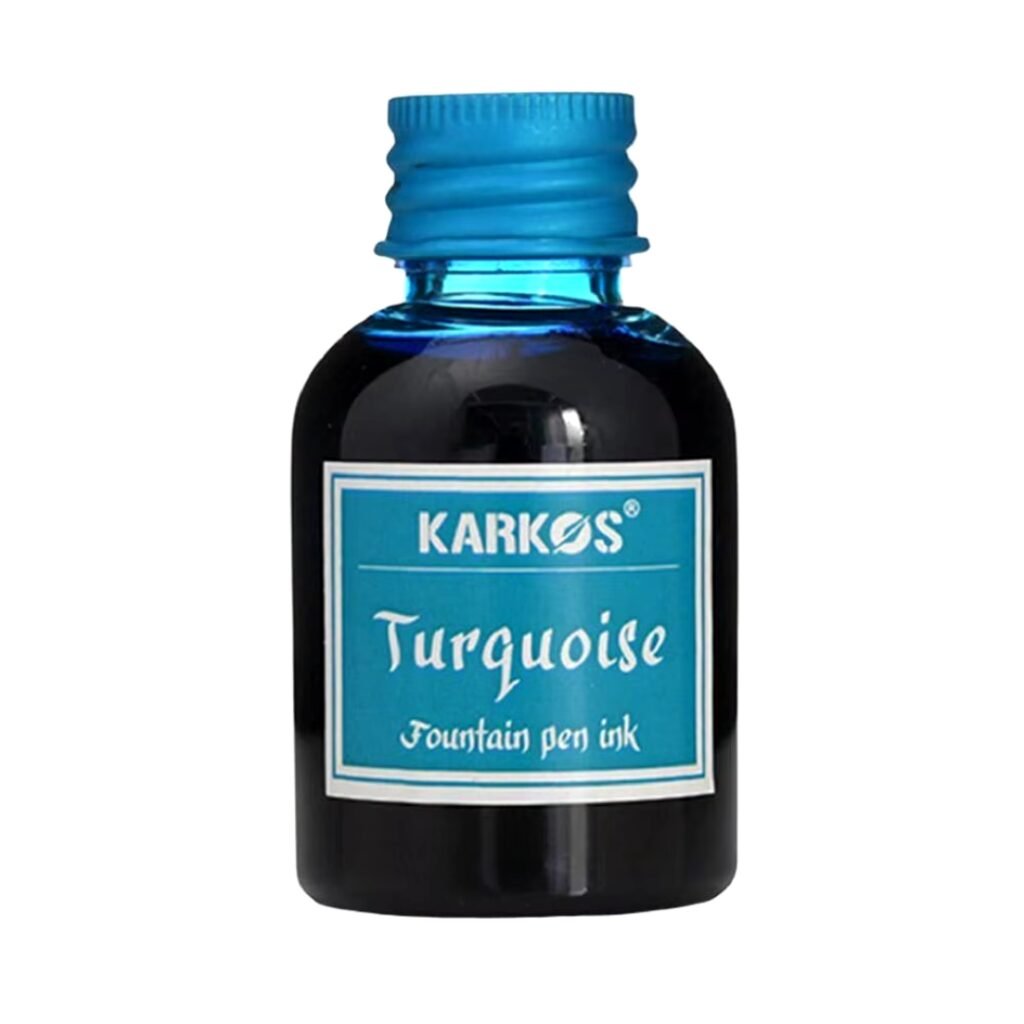Fountain pen ink is a unique type of liquid ink specifically designed for use in fountain pens. Unlike regular ink used in ballpoint pens or gel pens, fountain pen ink has distinct characteristics that ensure smooth flow, proper drying, and compatibility with the delicate mechanisms of fountain pens.
Composition of Fountain Pen Ink
The composition of fountain pen ink is what sets it apart. It typically consists of:
- Water: The primary solvent that keeps the ink fluid and allows it to flow smoothly through the nib.
- Dyes or Pigments: These provide the ink with color. Dyes dissolve completely in the liquid, while pigments are tiny particles suspended in the liquid.
- Surfactants and Wetting Agents: These additives help the ink spread evenly on paper.
- Preservatives: Prevent microbial growth in the ink bottle, ensuring longevity.
Why Regular Ink Isn’t Suitable
Regular ink, like that used in ballpoint or rollerball pens, is often thicker and contains oil-based or gel-based solutions. These are unsuitable for fountain pens because:
- They can clog the delicate feed mechanism.
- They may not flow smoothly through the nib.
- They lack the water-based fluidity required for fountain pens.
Fountain pen ink is tailored to provide a balance between flow and drying, preventing smudging while avoiding blockages.
Types of Fountain Pen Ink
- Dye-Based Ink
This is the most common type of fountain pen ink. It dissolves completely in water, offering vibrant colors and smooth flow. However, it may not be as water-resistant as other types. - Pigment-Based Ink
Pigment-based ink contains solid particles that provide excellent water resistance and lightfastness. It is often preferred for archival purposes but requires careful maintenance of the pen to avoid clogs. - Iron Gall Ink
Historically popular for its durability and permanence, iron gall ink reacts chemically with paper to form a long-lasting mark. However, it can be corrosive to some fountain pen materials, requiring thorough cleaning after use. - Shimmering and Sheening Ink
Modern innovations in fountain pen ink include shimmering and sheening inks, which add visual effects to writing. Shimmering ink contains tiny reflective particles, while sheening ink changes color depending on the angle of light.
Choosing the Right Fountain Pen Ink
The choice of fountain pen ink depends on factors such as:
- Purpose of Use: Everyday writing, artistic work, or archival purposes may require different inks.
- Paper Quality: Some inks bleed through or feather on low-quality paper, while others perform well even on thin sheets.
- Pen Compatibility: Certain fountain pens perform better with specific types of ink.
Maintaining Your Fountain Pen with Proper Ink
Using the right fountain pen ink is essential for maintaining the pen’s performance and longevity. Here’s how to ensure your pen remains in top condition:
- Clean the Pen Regularly: Flush the pen with water to remove residual ink, especially when changing colors or types of ink.
- Store the Ink Properly: Keep ink bottles tightly sealed and stored away from direct sunlight to prevent evaporation or contamination.
- Avoid Mixing Inks: Combining different inks can lead to chemical reactions, affecting flow and consistency.
Common Questions About Fountain Pen Ink
- Can I Use Regular Ink in a Fountain Pen?
No, regular ink can damage the pen’s feed system and impair its functionality. Always use ink specifically designed for fountain pens. - How Do I Clean a Fountain Pen?
Disassemble the pen and rinse all components with lukewarm water. Use a bulb syringe for thorough cleaning, especially if the ink has dried. - Does Fountain Pen Ink Expire?
While fountain pen ink doesn’t have a strict expiration date, it can degrade over time. Changes in color, consistency, or the appearance of mold indicate that the ink is no longer usable. - Why Does My Ink Feather on Paper?
Feathering occurs when ink spreads uncontrollably on paper. It’s often caused by low-quality paper or overly wet ink flow. Choosing fountain pen-friendly paper can solve this issue. - What Is the Difference Between Waterproof and Water-Resistant Ink?
Waterproof ink remains unaffected by water once dry, while water-resistant ink may retain some exposure marks but generally resists smudging or fading.
Conclusion
Fountain pen ink is a specialized product crafted to enhance the writing experience while protecting the pen’s delicate mechanisms. Understanding its composition, types, and proper usage ensures a smooth and enjoyable experience. Whether you’re an avid collector or a daily user, choosing the right ink and maintaining your pen can make a significant difference in performance and longevity.














































